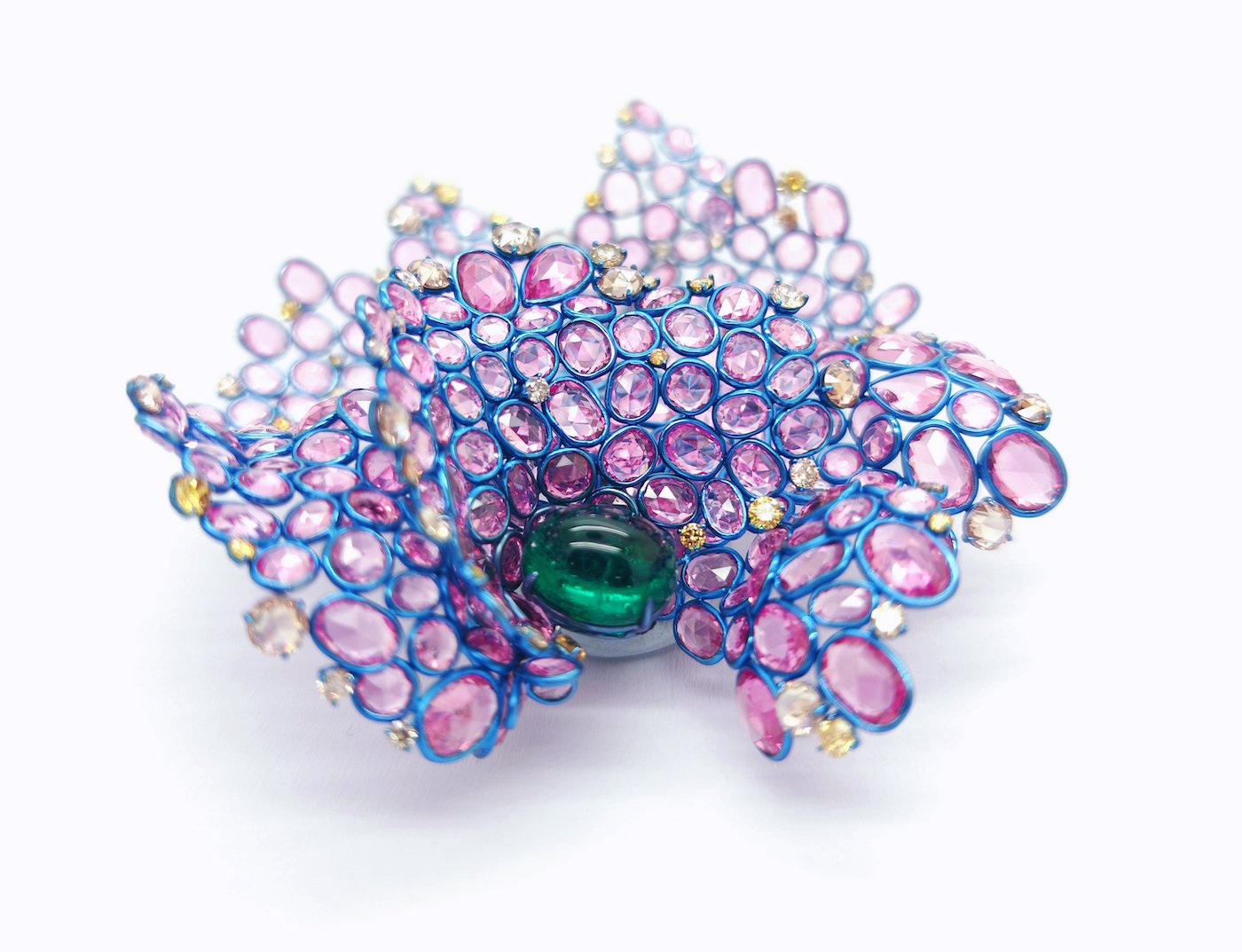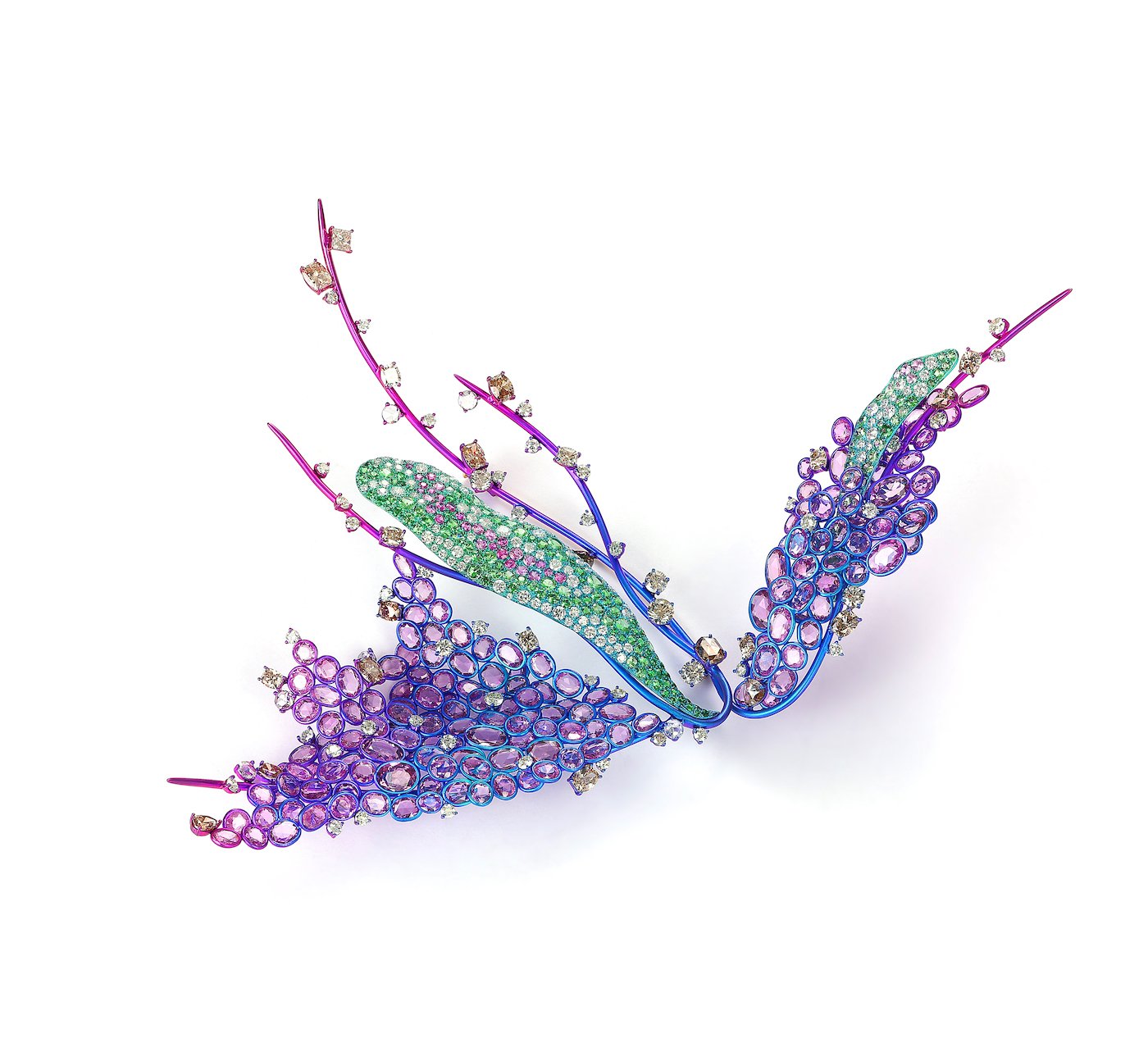e met Aso Leon last March, at GemGenève in Geneva, where he was exhibiting as part of the fair’s “emerging talents” showcase. Although “emerging” isn’t the right word for someone who has been crafting jewellery since 1995.
After 20 years working in OEM jewellery manufacturing in Panyu, where he learned his trade, Aso Leon is now an independent jewellery artist, specialising in titanium since 2005. Despite a glowing reputation in his home country, his name was totally unknown anywhere else, for the simple reason that, prior to GemGenève, Leon had never set foot outside China (and only speaks Chinese).
Setting eyes on his jewellery for the first time is like uncovering a treasure that has been hidden away for decades. The academic route wasn’t for him: Aso Leon wanted to be an artist, and quickly realised that jewellery and gems were the language with which he could express his ideas.
After a period of trial and error - titanium is notoriously difficult to work with – Leon uses electrolysis to achieve the colours and reflections he wants. “Unlike gold and silver, titanium lets you choose your colours. I enjoy seeing how light plays on the surface. You sense just how powerful the design is.”
He goes on to explain how “titanium isn’t like gold. With gold, you can cast it into whatever shape you want, whereas titanium has to be formed into separate parts which are then assembled.” Through experience, he has developed a unique method for creating his sculptural jewellery.

He cuts his aquamarines - in fact all his gems – himself. The freedom that comes with independence means he can give them the form he chooses: extremely flat and as thin as ice. He then hand-sets them using a technique of his own invention: similar to a closed setting, it also resembles the plique-à-jour method for enamel. Once each stone has been mounted in its titanium circle, he assembles the individual elements, forming the desired shape as he works. It’s a technique that requires skill and no small amount of patience: eight months to complete one butterfly. The result is startling beautiful, its texture almost organic, and infinitely light.
He takes inspiration from nature; not to reproduce it slavishly but to interpret what he sees in a poetic way. Traditional Chinese painting is another source. “I set out to develop jewellery that goes beyond ancient masterpieces, using stones almost like paint,” he says. He knows that there is no such thing as perfection in this world, preferring the adage that “nature has its supreme ways that go beyond human understanding.”

Aso Leon’s jewellery describes not just the beauty of what he sees; it conveys what he feels, too. His butterfly jewel is a butterfly and his idea of a butterfly, part magical winged creature, part water lily. This way of apprehending the world around him makes his jewellery entirely unique. “I would like my jewellery to spread something of Zen philosophy,” he says. “Everything has to be done quickly these days. I want to encourage people to take some time out; to slow down and experience nature, to let memories rise to the surface. I want to use my jewellery to explain nature’s magic.”
Asked why he thinks there is so much vitality and creativity in contemporary Asian jewellery, he replies that “for the past 50 years, Asia’s jewellery artists have been learning to tell stories, which the rest of the world is now discovering. We’ve seen many Asian creators and brands emerge in recent years. I feel that China is increasingly proud of its creators and jewellers. I belong to a generation that grew up during China’s economic reform, so I was lucky enough to study and learn all the skills I needed by working in manufacturing in Guangdong and Hong Kong. Our clientele has expanded, too. People used to buy commercial jewellery. Now they are more interested in unique, collectible pieces by independent creators.”
Indeed, for someone who already owns several major pieces by the most storied makers, there is an excitement - something contemporary art collectors will recognise - in discovering new names and adding to a collection with the work of an independent who isn’t afraid to reinvent this centuries-old art.
























































